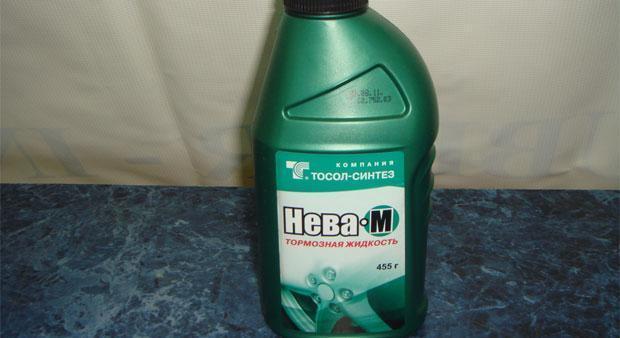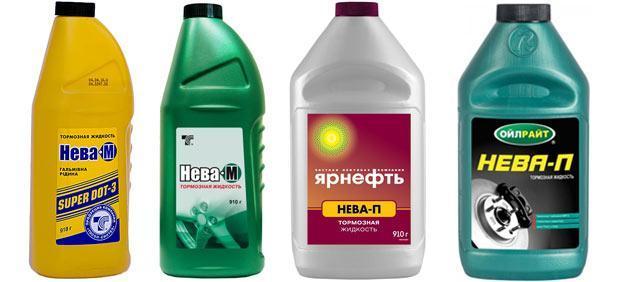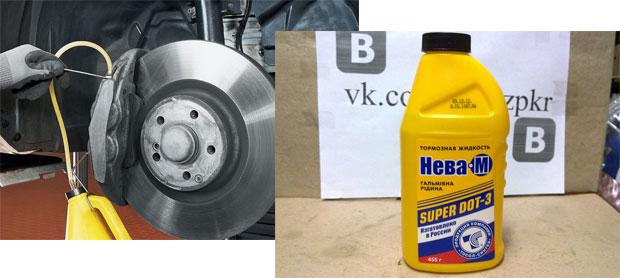
Brake fluid "Neva". Understanding the parameters
What color is Neva brake fluid?
Organoleptic indicators that judge the suitability of brake fluids for use include:
- chromaticity;
- no mechanical sediment;
- non-separation during long-term storage.
At the same time, the color index is not of a decisive nature, but only indicates the composition of additives that are introduced into the brake fluid in order to improve its lubricating and cooling capabilities, oxidation ability and acid number stability. Therefore, Neva should be purchased in transparent packaging that meets the requirements of GOST 1510-76, even if this negatively affects the price of the product.


According to the specification TU 6-09-550-73, Neva brake fluid (as well as its modification Neva-M) should have a rich yellow color with the possibility of slight opalescence (increased light scattering at temperatures approaching critical). The color of the already used liquid is slightly darker.
Any deviation in color is associated with an increased concentration of thickeners and anti-corrosion additives to the main components - ethyl carbitol and boric acid esters. "Neva" of a different color is not recommended for use at low ambient temperatures, since increased viscosity leads to a sharp increase in the force of pressing the brake pedal, and for cars equipped with ABS, it can generally cause a failure of this system.


Features
Neva universal brake fluid was developed at one time for use in domestic passenger cars such as Moskvich and Zhiguli, and therefore is fully compatible with such brake fluids as Tom and Rosa. Its physical and mechanical properties are as follows:
- Temperature range of practical use - ± 500C.
- Initial boiling point - 1950C.
- Kinematic viscosity, cSt, at temperatures up to 500C - no more than 6,2.
- Kinematic viscosity, cSt, at temperatures up to -400C - no more than 1430.
- Corrosive activity to other metals is negligible.
- The temperature at the beginning of thickening is -500C.
- Boiling temperature change after long-term storage - ±30C.
- Flash point - 940C.
- Volumetric swelling of rubber parts at temperatures up to 1200C, no more than 3%.
Slight corrosivity is possible only if this brake fluid is in contact with aluminum parts for a long time.


Feature of application
Brake fluids Neva and Neva M belong to the DOT-3 class. According to the international standard, the deviation of allowable temperatures for "dry" and "wet" liquids of this class is 205, respectively.0C and 1400C. In addition, with unsealed storage, annual water absorption of up to 2 percent of its volume is allowed. Thus, excessive moisture causes corrosion in the vehicle's brake system, which can lead to problems such as fumes blocking or pedal failure.
DOT-3 and DOT-4 brake fluids are interchangeable because they have a common base. It should be noted that a number of manufacturers of Neva and its analogues (in particular, Neva-super, which is produced by Shaumyan Plant OJSC, St. Petersburg) declare the use of polyalkylethylene glycol as the main component of the composition. However, the chemical properties of ethyl carbitol and polyalkylethylene glycol are close, and therefore there is no reason to refrain from mixing Neva from different manufacturers.


An important operational feature of the Neva brake fluid is its toxicity, which should be taken into account when observing safety regulations when using.
The price of brake fluid "Neva" and its analogues depends on its packaging:
- In containers of 455 ml - from 75 ... 90 rubles.
- In containers of 910 ml - from 160 ... 200 rubles.


Watch this video on YouTube

